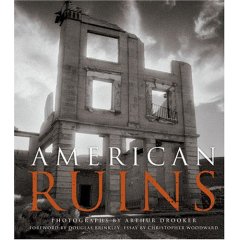As someone who has traveled in biblical archaeology in recent years, last week’s mega-discovery of the cave where the she-wolf supposedly nursed Romulus and Remus in Rome pressed all my skepical buttons. The pattern in the Middle East over the last century is well-established: Ambitious archaeologists make loud pronouncement, credulous reporters drink it up, the public gets taken for a ride, cooler heads prevail and the discovery is usually not what was first believed. We saw it just last year with the Jesus Tomb Hoax.
The pattern seemed alive and well with the early reports from Rome that started with this headline: Archaeologists in Rome Unveil Sanctuary Linked to Mythical Founder. Certainly no doubt there.
Archaeologists on Tuesday unveiled an underground grotto believed to have been revered by ancient Romans as the place where a wolf nursed the city’s legendary founder Romulus and his twin brother Remus.
Decorated with seashells and colored marble, the vaulted sanctuary is buried 52 feet inside the Palatine hill, the palatial center of power in imperial Rome, the archaeologists said at a news conference.
In the past two years, experts have been probing the space with endoscopes and laser scanners, fearing that the fragile grotto, already partially caved-in, would not survive a full-scale dig, said Giorgio Croci, an engineer who worked on the site.
The archaeologists are convinced that they have found the place of worship where Romans believed a she-wolf suckled Romulus and Remus, the twin sons of the god of war Mars who were abandoned in a basket and left adrift on the Tiber.
Thanks to the wolf, a symbol of Rome to this day, the twins survived, and Romulus founded the city, becoming its first king after killing Remus in a power struggle.
Ancient texts say the grotto known as the “Lupercale”_ from “lupa,” Latin for she-wolf – was near the palace of Augustus, Rome’s first emperor, who was said to have restored it, and was decorated with a white eagle.
But now, as you might imagein, the backlash is setting in.
A leading Italian archaeologist said Friday that the grotto whose discovery was announced this week in Rome is not the sacred cave linked to the myth of the city’s foundation by Romulus and Remus.
The Culture Ministry had no immediate comment on the statements from La Regina, who pointed to a description of the Lupercale given by Greek historian Dionysius of Halicarnassus in his major work on early Roman history, “Roman Antiquities.”
The Culture Ministry and experts who presented the find said they were “reasonably certain” the cavern is the Lupercale — a sanctuary worshipped for centuries by Romans because, according to legend, a wolf nursed the twin brothers there.
But Adriano La Regina, Rome’s superintendent of archaeology from 1976 to 2004, said ancient descriptions of the place suggest the Lupercale is elsewhere — 50 to 70 meters northwest of the cave discovered near Emperor Augustus’ palace. “I am positive this is not the Lupercale,” La Regina told Reuters in an interview.
Instead, he believes the cave — which ministry pictures show is decorated with well-preserved seashells and colored mosaics — was a room in Nero’s first palace on the Palatine Hill, which burnt down in 64 AD in the great fire of Rome.
Dionysius said the Lupercale, which draws its name from the Latin word for wolf, was close to the Temple of Victory, also on the Palatine Hill, while the cave unveiled this week was found near the Temple of Apollo.
“If this were the Lupercale, Dionysius would have surely mentioned the Temple of Apollo, which was much bigger and more famous than the Temple of Victory,” said La Regina.
He said the mosaics and other decorations found in the cave were typical of Nero’s era and its structure similar to a grotto found in the emperor’s new palace, the lavish Domus Aurea (House of Gold) he built after his first mansion went up in flames.
According to La Regina, the cave was a nymphaeum, or an artificial grotto used for dinners and receptions, which often had a fountain.
“This remains a great discovery because it is so well-preserved,” he said.

